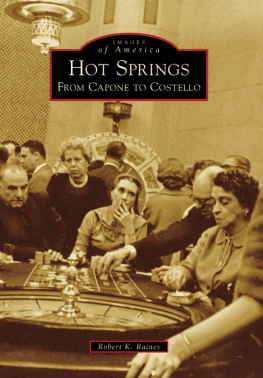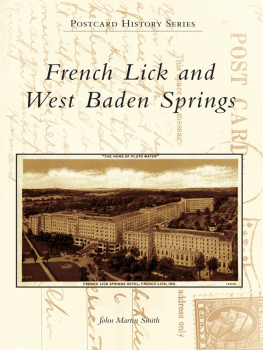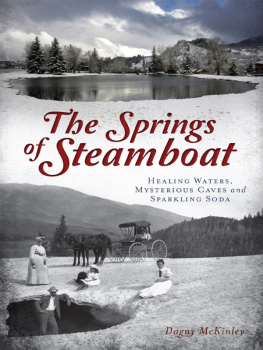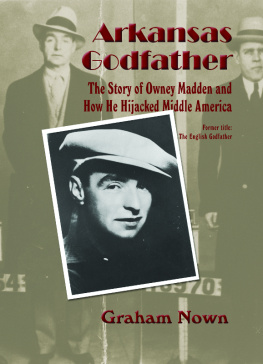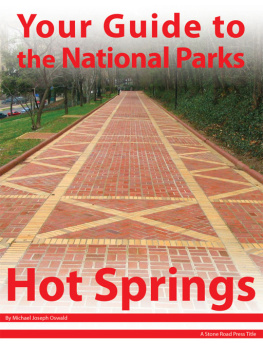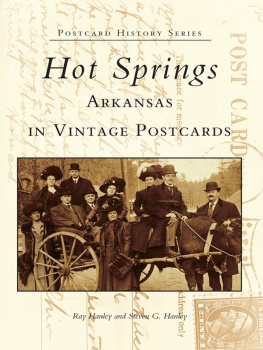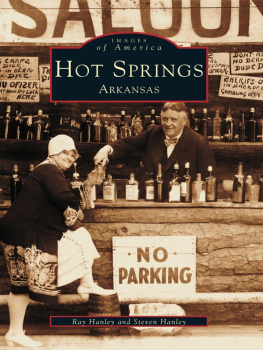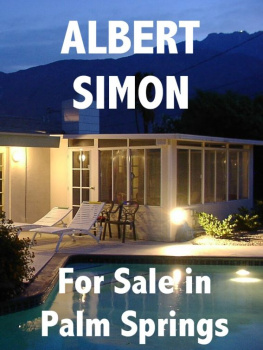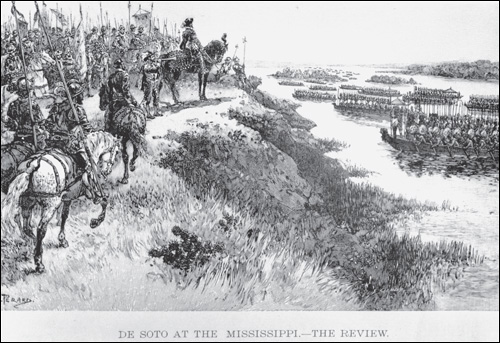
Courtesy of Mary D. Hudgins Collection. Special Collections, University of Arkansas Libraries, Fayetteville.
This early rendering shows the Spanish explorer Hernando De Soto on his quest for gold in what would become the southern United States. His travels took him west into an area that the Native Americans referred to as the valley of the vapors. Centuries later, it would be known as Hot Springs, Arkansas.
O N THE C OVER: The interior of the Southern Club is seen around 1960. This photograph would have violated the policies of the Hot Springs gambling establishment, as gambling was not, and has never been, legal in Arkansas. From 1927 until 1967, however, gambling was wide open and discussed in major American publications. The photographer of this telling scene is unknown. (Courtesy of the Gangster Museum of America collection.)
To those that remain, and those departed, who have shared their firsthand accounts of the fascinating history of this city.

Copyright 2013 by Robert K. Raines
ISBN 978-1-4671-1076-1
Published by Arcadia Publishing
Charleston, South Carolina
Printed in the United States of America
Library of Congress Control Number: 2013935757
For all general information, please contact Arcadia Publishing:
Telephone 843-853-2070
Fax 843-853-0044
E-mail
For customer service and orders:
Toll-Free 1-888-313-2665
Visit us on the Internet at www.arcadiapublishing.com
C ONTENTS
F OREWORD
Have you ever had a seminal moment in life? Maybe you didnt call it seminal, but we have all had moments that refine, and sometimes transform, our lives. On February 7, 2009, I had my seminal moment. It was a Saturday in Los Angeles, and it had been raining for a week straight. I was sitting in my home office, severely depressed because I had just lost a television project I was passionate about. I was an aspiring writer/producer from New Jersey, and the project was my opus on how organized crime got organized in the 1920s and 1930s. The project, however, had just gone up in flames, with Boardwalk Empire holding the match! I was devastated. All of the research, all of the books readall for nothing. And, as I shook my head, looking at the bookcase across from me, it happened. Hot Springs. Out of nowhere, Hot Springs, Arkansas, popped into my head. I remembered it being mentioned in several of those books I had read. Then, 30 Google-crazed seconds later, I found myself looking at the website of The Gangster Museum of America, located in Hot Springs. About five minutes after that, I was on the phone with Robert Raines, the owner, director, historical keeper of the flame, and the brains behind the museum. It was somewhere around the 45-minute mark in our ensuing conversation that I booked my flight to Hot Springs. This, of course, was based solely on Roberts promise to be my personal tour guide. Bring a camera, plenty of paper and a good writing pen, Robert advised me. Youre gonna need em. One month later, while on the front portico outside of the Arlington Hotel, I was greeted by Robert with an affectionate hug, which instantly made me feel like Id known him my whole life.
Over the course of the next three days, I was transported back to a time and place in which Americas most notorious gangsters stayed in the same decadent hotels as the nations most powerful politicians; where Hollywoods most famous actors gambled in opulent casinos with the FBIs most wanted outlaws; and where legendary professional baseball teams like the Yankees and Red Sox soaked away spring trainings aches and pains in the therapeutic healing waters offered by the sleepy little spa town, known to all as The City of Visitors. Hour after hour and day after day, Robert told me stories I could hardly believe were true. But, incredibly, they were. And now, he is sharing them with you. I hope you enjoy this ride through one of Americas best-kept secrets as much as I have. I can tell you this much: you have one heck of a tour guide!
Glenn P. Klekowski
Television writer/producer
Beacon Pictures
September 24, 2013
I NTRODUCTION
There are few places in America that have been written about more than Hot Springs, Arkansas. As far back as the 1500s, a member of Spanish explorer Hernando DeSotos conquistadors wrote of the area where steaming water oozed from the ground, forming pools that the natives enjoyed. The writer of these chronicles, who went by the nom de plume the Gentleman of Elvas, tells how the band camped for a month in this mountainous region, with the men and horses recuperating and enjoying renewed health. He wrote, In this time, the horses fattened and throve more than they had done at other places. DeSoto would move on in his quest for gold, but the group of Native Americans he left behind was known as the Caddo tribe. The Caddos were a peaceful people that legend spoke of as having been born from the steam that rose from the springs. This legend, along with the healing that other Indians experienced, led to the Caddos domain being considered sacred.
Just a few miles north of the springs, battles were fought over control of a rich novaculite deposit the Indians used for weapons and tools. The clashes, however, would not drift into the area that the Indians referred to as the Valley of the Vapors, now known as Hot Springs, Arkansas. The valley was henceforth considered neutral territory.
Thomas Jefferson, upon hearing about the springs, commissioned an expedition, led by William Dunbar and Dr. George Hunter, to explore the area, which was part of the land that Jefferson bought from Napoleon Bonaparte. Jeffersons expenditure of $15 million for half a billion acres of land (roughly 3 an acre), now known as the Louisiana Purchase, was considered a bad bet by some in Washington. It would not be the last bet placed in this neck of the woods.
Hunter and Dunbar wrote in their journal about a valley in the Ouachita Mountains and its thermal waters. As their descriptions circulated, people began to settle in the area. The town was called in turn Thermopolis, Warm Springs, and Hot Springs. Each year, more and more people came to enjoy and to study the mineral-rich thermal water; those early visitors certainly needed a hot bath after traveling by horseback or stagecoach over the limited number of bone-jarring trails that led to the city. By the mid-1800s, privately owned bathhouses began to open along the east side of Hot Springs Creek and Valley Street, now known as Central Avenue. In order to settle ownership claims by private citizens who had become bathhouse entrepreneurs, the US Supreme Court in 1876 declared the claims invalid and that the land and springs on which the bathhouses were built were under federal control. The courts ruling was based on an 1835 bill signed by Andrew Jackson setting aside the land to be preserved for recreational use. The land of the hot springs essentially became the countrys first national park, and Bathhouse Row as we know it today was officially opened for business.
One of the most tumultuous times in American history, the Civil War, would test the neutrality of the valley, as both North and South sent soldiers to convalesce in the hot springs. As it had done with the warring tribes of Indian nations, the thermal waters overwhelmed any feelings of animosity the two sides had, and more than just broken bones and gunshot wounds were given time to heal.
Stephen Crane, author of
Next page
